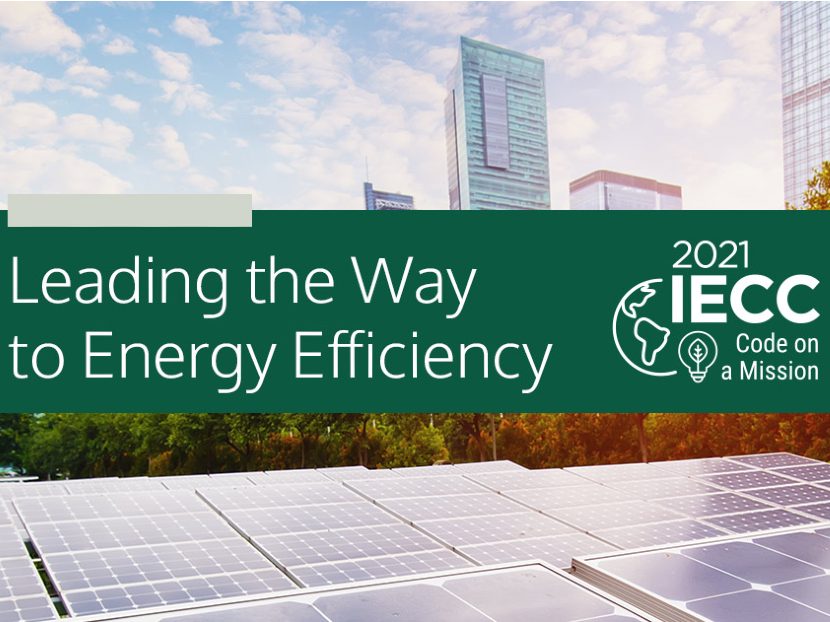ICC Launches Code on a Mission Challenge

The International Code Council (ICC) has launched its "Code on a Mission" challenge which aims to have over a third of the U.S. population covered by the 2021 International Energy Conservation Code (IECC) by the end of 2023. To make this a reality, the Code Council is challenging the building industry and communities alike to update their building energy codes to meet or exceed the requirements of the 2021 IECC. Already industry leaders like Architecture 2030, the Institute for Market Transformation (IMT), Energy Efficient Codes Coalition (EECC), Northeast Energy Efficiency Partnerships (NEEP), National Electrical Manufacturers Association (NEMA) and Responsible Energy Codes Alliance (RECA) have shown their support for the initiative.
As communities race to reduce their greenhouse gas (GHG) emissions and increase energy efficiency, modern and innovative energy codes are essential. Recognizing the increasing need for impactful tools and resources, the 2021 IECC incorporates significant improvements for both residential and commercial buildings over the 2018 edition including the following:
- Increased insulation requirements and reduced fenestration U-factors and solar heat gain coefficients for both residential and commercial provisions.
- New mechanical ventilation testing and exterior lighting requirements for residential buildings.
- Lower ERI path values and additional energy reduction requirements in the residential requirements.
- Updated mechanical equipment efficiency requirements, new provisions for data centers and plant growth lighting, and increased lighting efficacy and decreased lighting power density requirements for commercial buildings.
- Zero energy appendices for jurisdictions wishing to implement zero energy building requirements today.
On July 21, the U.S. Department of Energy (DOE) released its final determination finding that the residential provisions of the 2021 IECC provide a 9.4% improvement in energy use and an 8.7% improvement in carbon emissions over the 2018 IECC, saving homeowners an average of $2,320 over the life of a typical mortgage. Since 2006, the IECC has provided an approximately 40% improvement in energy efficiency, meaning that residents in states and cities on older IECC editions would see far greater savings. The Department has also released data on energy, cost and GHG reductions each state and many cities could achieve by adopting the 2021 IECC, which are available here.
With the zero-energy building goals set forth by the U.S. Administration for new construction by 2030 and 2050 for all buildings, it is imperative that national, state and local governments incorporate energy codes to meet their GHG reduction objectives and align with these goals. Additionally, states and localities have set either GHG reduction goals or established zero-energy building targets that will require an alignment with modern energy codes.
Currently, per the U.S. Department of Energy (DOE) and the Pacific Northwest National Laboratory, 14 states have adopted codes that are at least 20% less efficient than the current IECC while another ten states have no statewide energy code adopted.
"Reducing society's GHG emissions is no longer a 'nice-to-do' but rather a critical necessity, and governments, communities and the building industry as a whole are increasingly recognizing the contributions of buildings," said Ryan Colker, vice president of innovation at ICC. "Luckily, modern and innovative model building codes like the IECC have already been developed to significantly curb emissions and help achieve zero-energy buildings. We urge national, state and local governments to accept our challenge and members of the building industry to support code updates."
Visit iccsafe.org/iecc-on-a-mission for the following:
- For more information on the "Code on a Mission" campaign.
- To learn more about the benefits of the adoption and implementation of the 2021.
- To report an adoption of a code that meets or exceeds the 2021 IECC.
- To become a mission supporter or to access adoption resources.




